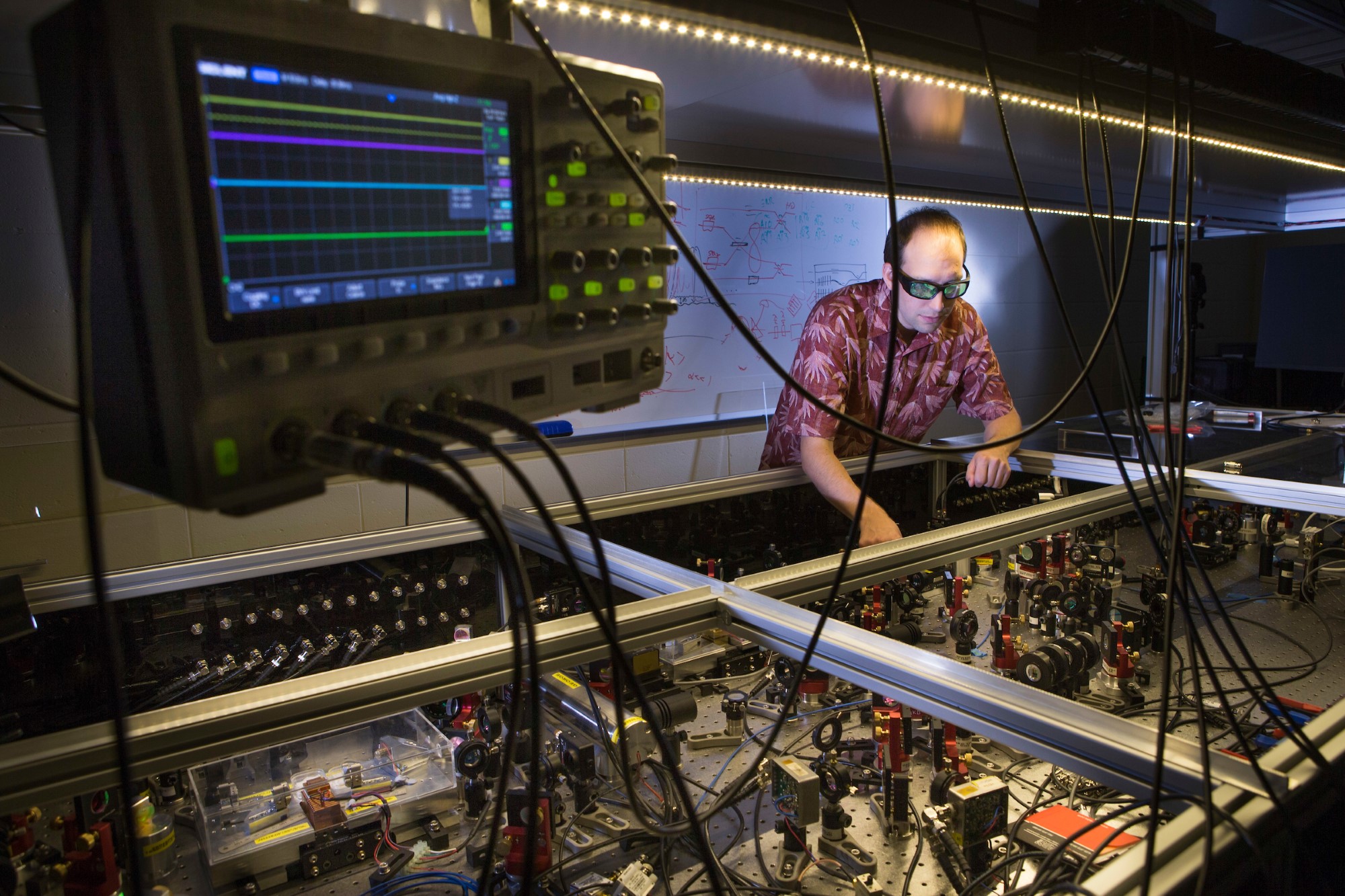
Research projects
Discover the forefront of astronomy and astrophysics through our projects, ranging from deep-space communication systems to groundbreaking adaptive optics. Explore our diverse, ongoing research initiatives shaping the future of space science.
Displaying 121 - 135 of 171 project(s).
This projects aim to understand new methods for estimating the stellar masses of distant galaxies using imaging from the James Webb Space Telescope.
Theme
- Structure and evolution of the Cosmos
TAROS is a remote observing software system that has been designed and implemented at RSAA. The system allows the ANU telescopes at a remote location to be operated automatically, or interactively with authenticated control via the internet.
Theme
- Instrumentation
Our team is looking for enthusiastic Honours, Masters and PhD students with a strong background in Maths, Physics, or Computer Science who want to work on some of the most important questions currently discussed in near-field cosmology community.
Theme
- Galactic archaeology
- Structure and evolution of the Cosmos
The SkyMapper Transient (SMT) Survey is a currently searching and studying supernovae and other transient sources in southern sky.
Theme
- Stellar and planetary astronomy
This project is intended to search for the magnetic field signature of the Magellanic halo.
Theme
- Structure and evolution of the Cosmos
Student intake
Open for Bachelor, Honours, PhD students
People
- Professor Naomi McClure-Griffiths, Supervisor
The goal of this project is to build a software pipeline that can take simulations of galactic winds, such as the one shown in the figure, and make simulated observational images from them that can be compared directly to telescopic data.
Theme
- Stellar and planetary astronomy
- Structure and evolution of the Cosmos
This project will simulate observations of the magnetic fields of a Milky Way-like galaxy from a recent, high-resolution simulation. The goal is to identify effective ways to reconstruct the 3D magnetic field geometry of this simulated galaxy using observables projected onto the 2D sky.
Theme
- Galactic archaeology
- Structure and evolution of the Cosmos
Student intake
Open for Bachelor, Honours students
People
- Professor Naomi McClure-Griffiths, Supervisor
This project will simulate observations of the magnetic fields of a Milky Way-like galaxy from a recent, high-resolution simulation. The goal is to identify effective ways to reconstruct the 3D magnetic field geometry of this simulated galaxy using observables projected onto the 2D sky.
Theme
- Galactic archaeology
- Structure and evolution of the Cosmos
Student intake
Open for Bachelor, Honours students
People
- Professor Naomi McClure-Griffiths, Supervisor
In order to further the MAVIS design, an image simulator was built in Python, allowing star catalogs to be fed in, which are used to generate realistic MAVIS images. MAVIS now requires an IFU simulator to be developed, providing realistic IFU images from star catalogs.
Theme
- Instrumentation
Student intake
Open for Bachelor, Honours students
People
- Dr Jesse Cranney, Supervisor
- Dr Trevor Mendel, Supervisor
In order to further the MAVIS design, an image simulator was built in Python, allowing star catalogs to be fed in, which are used to generate realistic MAVIS images. MAVIS now requires an IFU simulator to be developed, providing realistic IFU images from star catalogs.
Theme
- Instrumentation
Student intake
Open for Bachelor, Honours students
People
- Dr Jesse Cranney, Supervisor
- Dr Trevor Mendel, Supervisor
This project will build on work within the Dark-ages, Reionization And Galaxy-formation Observables Numerical Simulation project (DRAGONS).
Theme
- Structure and evolution of the Cosmos
Student intake
Open for Bachelor, Honours, PhD students
People
- Dr Yuxiang Qin, Supervisor
- Professor Stuart Wyithe, Supervisor
This project will build on work within the Dark-ages, Reionization And Galaxy-formation Observables Numerical Simulation project (DRAGONS).
Theme
- Structure and evolution of the Cosmos
Student intake
Open for Bachelor, Honours, PhD students
People
- Dr Yuxiang Qin, Supervisor
- Professor Stuart Wyithe, Supervisor
To optimally build and operate adaptive optics systems, we need to understand the typical atmospheric conditions on the site where the telescope is built. Therefore, the Advanced Instrumentation and Technology Centre (AITC) is conducting a site characterisation campaign at Mount Stromlo.
Theme
- Instrumentation
SkyMapper is a state-of-the-art automated wide-field survey telescope located at Siding Spring Observatory. Its mission is to robotically create the first comprehensive digital survey of the entire southern sky, providing a massively detailed record of over a billion stars and galaxies, to a depth one million times fainter than the human eye can observe.
Theme
- Instrumentation
Approximately 75% of SkyMapper's observing time will be initially dedicated to the Southern Sky Survey, a comprehensive digital survey of the entire southern sky.
Theme
- Galactic archaeology
- Stellar and planetary astronomy
- Structure and evolution of the Cosmos
